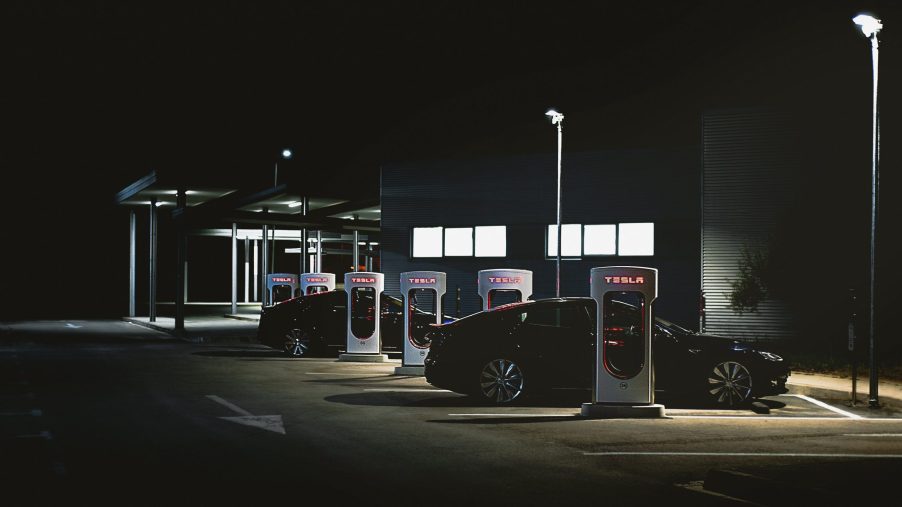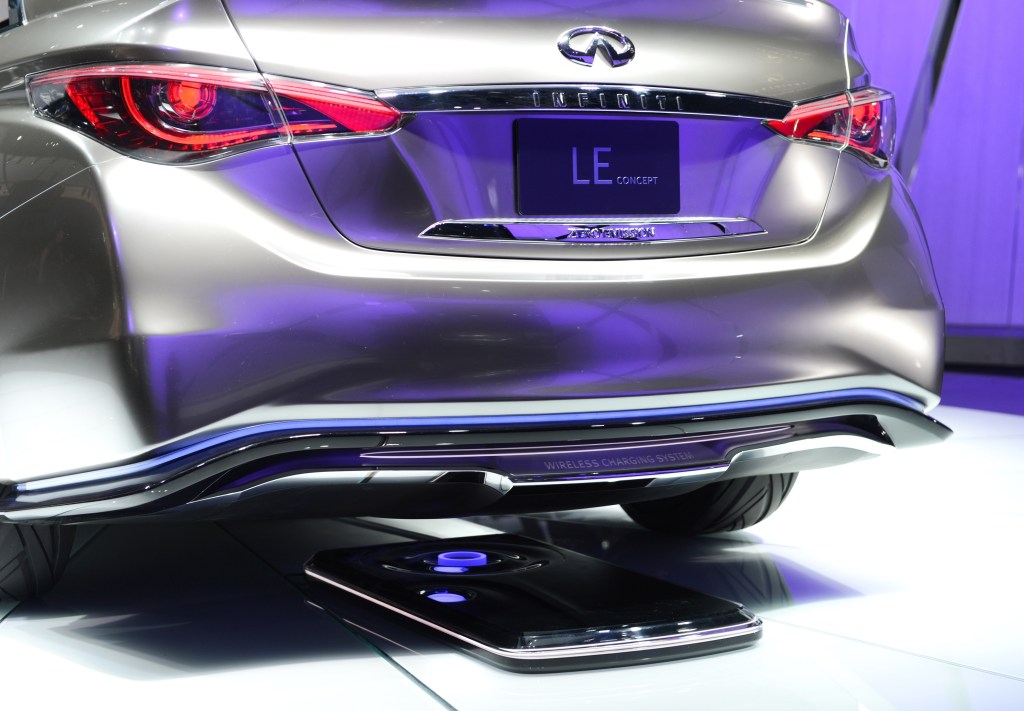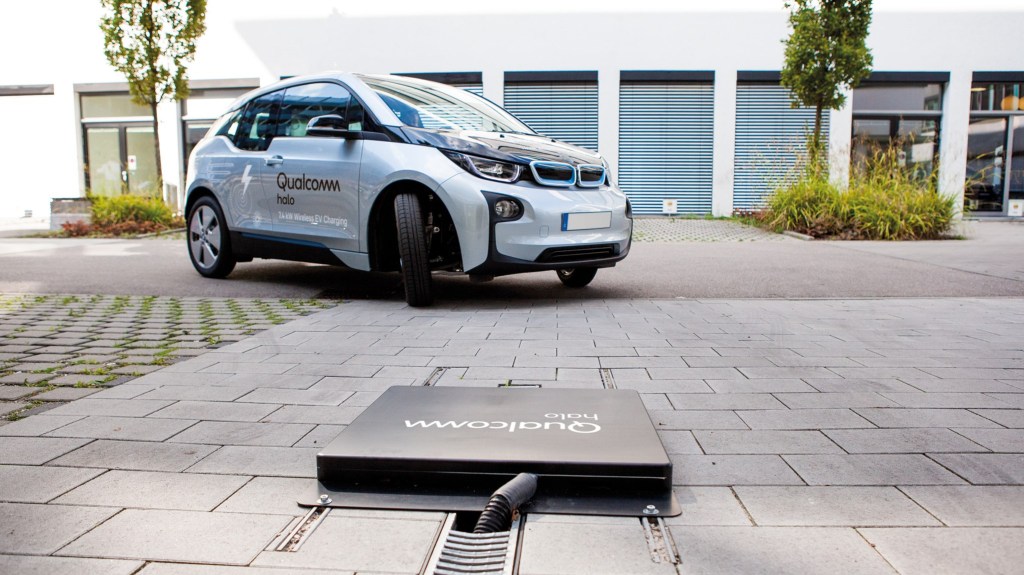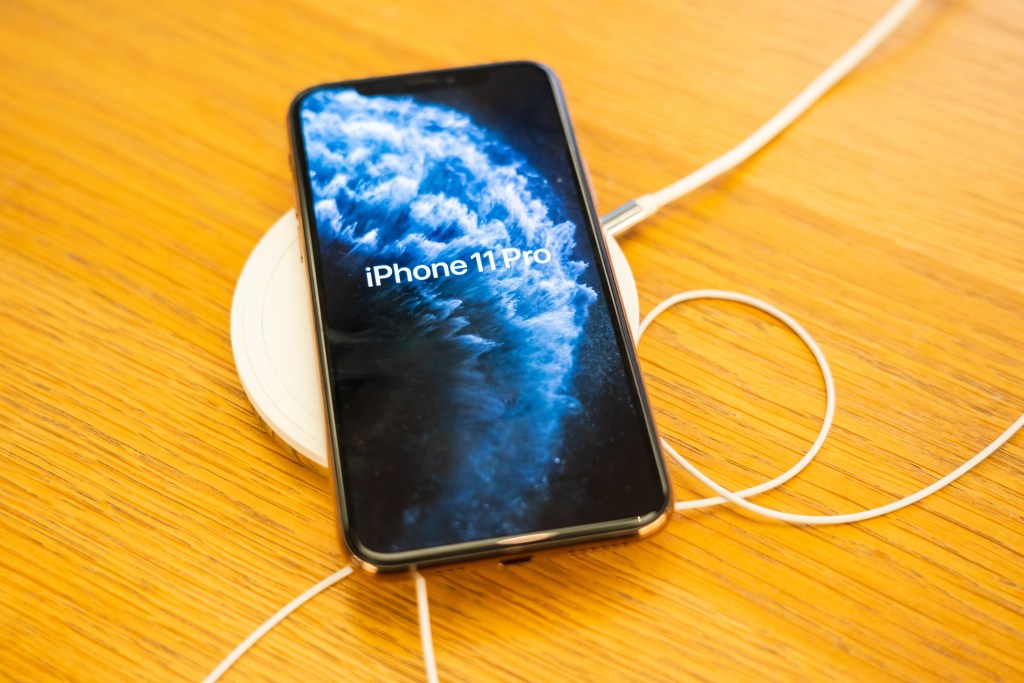
How Close Are We to Wireless Charging EVs, Really?
We’re a competitive species. I mean, look at the Olympics. It’s all about who can do what faster, further, and better. In many ways, the auto industry is a reflection of the Olympics. It was only a matter of time before someone looked at a cellphone charging and said “how can I do this better?” Well, now someone, or rather, a lot of someones, has decided to do that with EVs. Now, we’re close to wireless charging EVs.
Wireless charging EVs isn’t a new concept

It’s really not a new idea. One day, someone way smarter than myself looked at an EV sitting on the street charging, then back at their phone and said “huh.” Now, that random person is probably a billionaire. Either way, manufacturers have had the idea on their radar for about as long as the EV has been around. Infiniti was exploring the idea of wireless charging EVs back in 2014.
In fact, 2014 was somewhat of a big year for wireless charging EVs. Well, it should have been, but more on that later. Back in 2014, high school me (yes I am a child) heard that Volkswagen was “three years away” from having an EV that would charge simply by being parked over a little black square in the ground. I barely knew what a Tesla was back then, and it blew my mind. Unfortunately, it’s been three years and that’s not the case.
Unfortunately, there’s a lot of red tape to cut

Frankly, a lot of that is due to the law. Sure, law and order are great but it also creates a lot of legislative red tape for manufacturers to cut through. They can do all the testing they want, as Qualcomm has done, but the fact of the matter is, products must be safe before they go to the consumer. That’s why Tesla’s “Full Self-Driving” is still just a beta. Wireless charging of anything creates heat. We’ve got to make sure that heat is at a safe level before it can be safely used.
EVs are already somewhat of a fire risk in a worst-case scenario, and adding more heat to the daily life of a gigantic lithium-ion battery on wheels is something best looked into first. NBC predicts we’ll have wireless charging EVs (that are parked) by 2022. Now, I’m not sure how likely that is, given it’s already August, but here’s hoping. The major news publication also points out the need for international quality and safety standards to be met.
New charging tech is almost inevitable

Frankly, the adoption of the tech is inevitable. Humans are creative little creatures, and eventually, someone will finally find a way to do it and get rich. For now, our biggest hold-up, aside from the legalities of this tech, is plain old electricity. With everyone soon transitioning to EVs, we need more power in our homes than ever, and outdated city grids simply cannot provide. Before we can have wireless EV charging, we need the infrastructure to support that.


